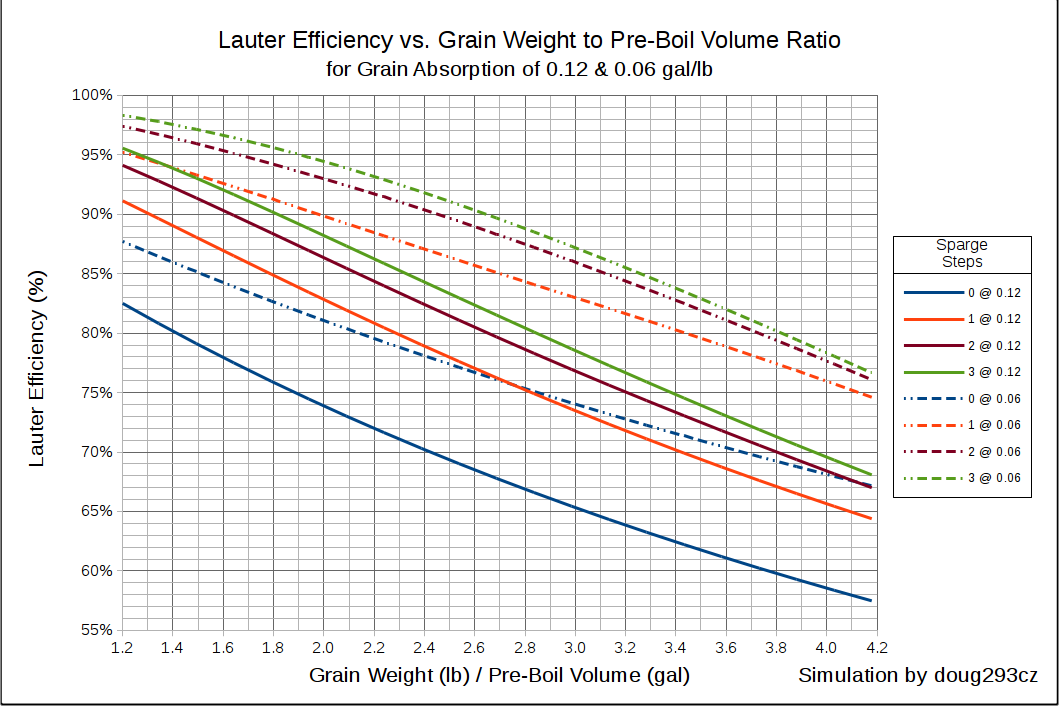So question on some of those:
- What is the "weighted average grain potential" ?
It's the sum of each grain weight times that grain's PPG divided by the total grain weight. So if you have 9 lbs at 37 ppg and 1 lb at 25 ppg the weighted average potential is:
(9 * 37 + 1 * 25) / (9 + 1) = (333 + 25) / 10 = 35.8 ppg
- Can you explain "End of mash SG after homogenizing all the wort in the mash" ? Is that essentially the SG of the wort pre boil but after sparge?
It is the SG of the wort in the mash BEFORE adding any sparge water. This is the SG value needed to calculate conversion efficiency. The wort needs to be homogenized so that low SG wort not in contact with the grain (above, below, outside a malt pipe, etc.) is mixed in with the high SG wort in the grain mass. If you don't homogenize, then the SG measurement can be too high or too low, depending on where the sample is taken from. The best way to homogenize depends on your mash hardware configuration.
- "First runnings volume" is that amount of wort before sparge water being added?
Yes. If you are batch sparging it is the volume collected after the first draining, before adding any sparge water. It is used to calculate the grain absorption rate as follows:
Grain Absorption Rate = (Strike Water Vol - First Runnings Vol) / Total Grain Wt
You need to know the absorption rate in order to do your starting water volume calculations. This is not applicable to fly sparging.
Some of those metrics I actually do have from my last session




